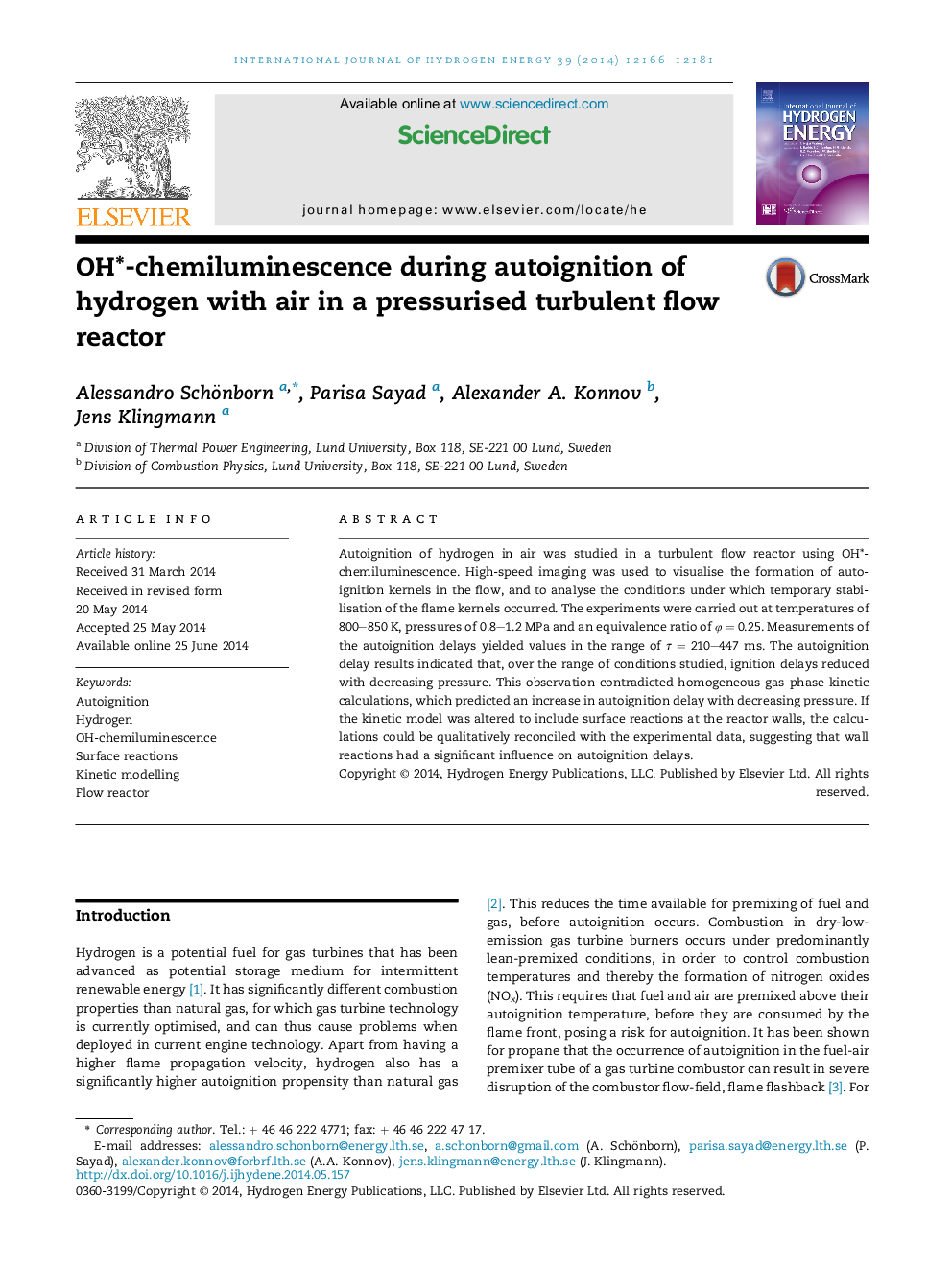| Article ID | Journal | Published Year | Pages | File Type |
|---|---|---|---|---|
| 1273015 | International Journal of Hydrogen Energy | 2014 | 16 Pages |
•Autoignition of hydrogen and air was studied at conditions relevant to gas turbine combustor premixing tubes.•Formation of ignition kernels was visualised using OH*-chemiluminescence.•Ignition delays were recorded at varying pressures and temperatures.•Ignition delays reduced at low pressures in contrast to gas-phase chemical kinetic calculations.•The pressure dependence of ignition delays may be explained by surface reactions.
Autoignition of hydrogen in air was studied in a turbulent flow reactor using OH*-chemiluminescence. High-speed imaging was used to visualise the formation of autoignition kernels in the flow, and to analyse the conditions under which temporary stabilisation of the flame kernels occurred. The experiments were carried out at temperatures of 800–850 K, pressures of 0.8–1.2 MPa and an equivalence ratio of φ = 0.25. Measurements of the autoignition delays yielded values in the range of τ = 210–447 ms. The autoignition delay results indicated that, over the range of conditions studied, ignition delays reduced with decreasing pressure. This observation contradicted homogeneous gas-phase kinetic calculations, which predicted an increase in autoignition delay with decreasing pressure. If the kinetic model was altered to include surface reactions at the reactor walls, the calculations could be qualitatively reconciled with the experimental data, suggesting that wall reactions had a significant influence on autoignition delays.
